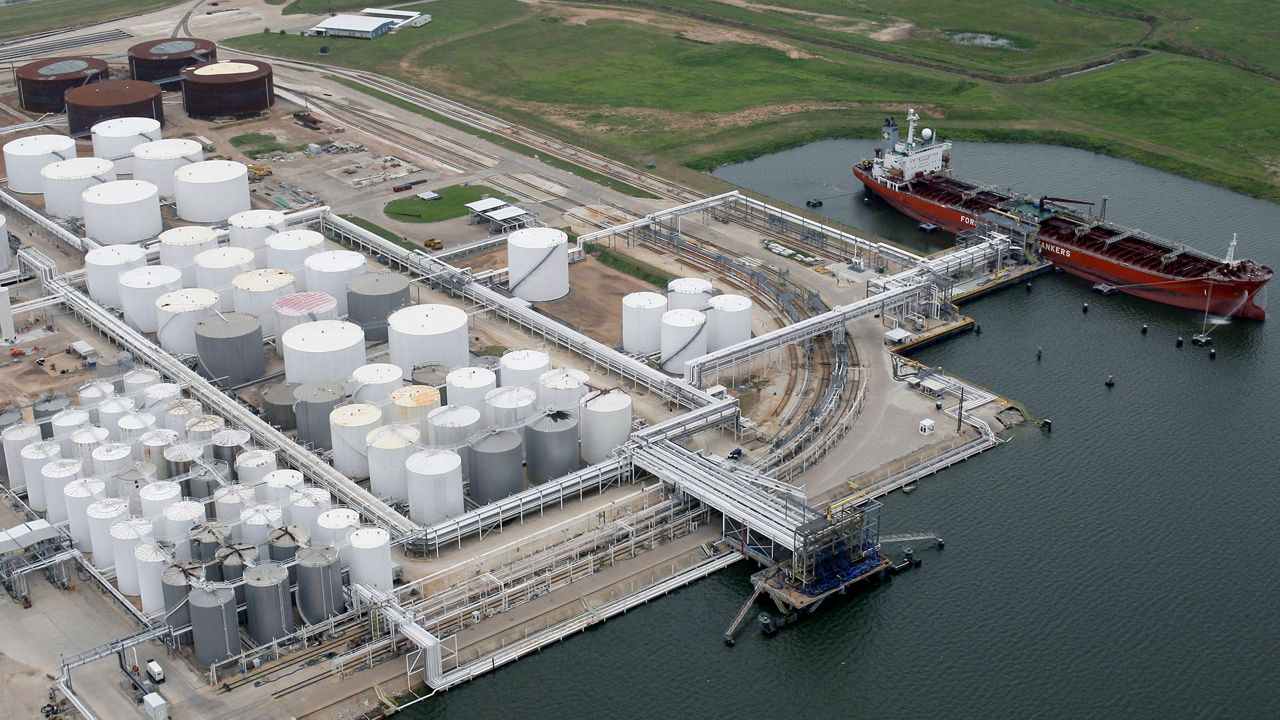FREEPORT, Texas — Physical Therapist Melanie Oldham has seen first hand the toll air and water pollution has taken on her tiny coastal community of Freeport. She regularly visits homes in her town, whose population is a little more than 12,000, and said that an overwhelming number of people suffer from asthma and other permanent health issues. Both of her children, now in their 20s, are still stricken with respiratory problems that she believes stem from the many oil and gas pipelines that zig-zag beneath the surface of Freeport, and the refineries that produce the fuel.
Aside from the unusually high number of pipelines in the area, the town is flanked on one side by Dow Chemical and BASF plants — both major supplies of polyurethane raw materials and systems — and on the other, Freeport LNG, a major exporter of natural gas. The air in Freeport, and all of Brazoria County, residents say, can irritate and burn your eyes on a windy day. An acrid chemical smell hangs over the area like a noxious cloud.
“There are so many children who live in our area that have asthma,” Oldham said. “And also a lot of older people have COPD. Up in Houston, when there's orange ozone days, they have signs flashing on the freeway that say, ‘If you have COPD or if you're a child with asthma, stay indoors.’ We don't have any type of warning system down here. I know how to check the ozone monitor, and I know we have a lot of bad orange ozone days.”
Oldham and others fear the air quality in her area is about to become significantly worse. Oil company Sentinel Midstream and financier Freepoint Commodities plan to build a project known as Texas GulfLink in Brazoria county off the coast of Freeport and nearby Jones Creek. GulfLink would include a massive crude oil storage facility in Jones Creek, onshore and offshore pipelines that will run through the Justin Hurst Wildlife Management Area, and an oil export terminal off the Brazoria county coast.
Despite the recent collapse in oil demand and prices, this project is a contender to be the first Gulf Coast offshore oil terminal able to load supertankers hauling 2 million barrels of crude oil for export daily and is slated for construction only 7 miles downshore from its competitor, the equally massive proposed Sea Port Oil Terminal (SPOT).
The strip of coast where Freeport sits is on the verge of becoming one of the highest-producing areas for oil and gas in the country. The private equity-based newcomer Sentinel is competing against industry giants — Enterprise Producers Partners, Phillips 66, and Energy Transfer — for the deepwater terminals with the capacity to fill very large crude carriers (VLCCs) to capacity. The Texas GulfLink project could also be in a position to win lucrative contracts and financing if it's the first to gain approval from the U.S. Maritime Administration and the U.S. Coast Guard, which could come as early as 2021.
GulfLink and SPOT are just two of the nine proposed oil export terminal projects in different stages of permitting. There are also close to 20 methane gas LNG export terminals in various stages of development, and many new petrochemical plants proposed in the costal area.
After initially responding to an email from Spectrum News 1, Sentinel did not return multiple subsequent follow-up emails requesting interviews and information.
Brazoria County is already a non-attainment zone, an area considered to have air quality worse than the National Ambient Air Quality Standards as defined in the Clean Air Act Amendments. Environmental activists and experts fear this project will push the area back down into the “severe non-attainment” threshold.
The oil and gas companies operating in the area, activists believe, have ignored basic science and regulatory limitations. These companies are aided by a state regulatory bodies that work on behalf of the companies, not the residents, critics claim.
Lori Glover, a campaigner for Earthworks, an environmental advocacy nonprofit, said many residents in the Gulf region either didn’t know about the projects, or thought they were dead. Even high-ranking local government officials seem to be in the dark about the project.
“Frequently, there's a lack of communication between the industry, the regulatory entities, and the communities that are impacted,” she said. "It's a grave concern.”
The size and scope of GulfLink is what concerns Cynthia Jordy, who worked as an environmental scientist for a major oil gas company for 35 years, and worked specifically on the ozone non-attainment areas near Houston and Galveston for more than 25 years.
“I'm concerned about the project from an air emission standpoint, from a water supply standpoint, and an emergency response standpoint,” she said. “The magnitude of the proposal project is huge. It's a game-changer. It's going to put the Jones Creek area as a crude oil export facility the size of some of the OPEC facilities in the Middle-East.”
Even though the project involves loading oil onto tankers stationed 28 nautical miles offshore, Jordy and others say the circular wind patterns in the Gulf of Mexico will blow the emissions back toward the coast, resulting in a 25% increase in volatile organic hydrocarbons (VOCs), which would affect the air quality in cities as far inland as Houston.
Sentinel and the other companies that operate in the area are using an emissions loophole to gain federal approval. The pollution they emit on land is counted in a different category than those emitted in the Gulf.
“The bottom line is those air emissions are going to happen,” Jordy said. “And from everything I know about the meteorology in the area, the air emissions are going to go on-shore and they're going to affect our air quality.”
Sentinel Midstream has not conducted an air quality study for the project. During a public feedback period, people made more than 30,000 comments against the Gulf Link Project, which also includes construction of a “tank farm,” an area densely packed with oil storage tanks, which is slated to be built in one of Freeport’s residential areas set in a flood zone.
Equally concerning to GulfLink’s critics is the fact that Brazoria County groundwater permits are nearly maxed out. Most area residents rely on well water, and advocates, such as Glover, worry the Sentinel site could put the county over state limits for groundwater management.
“If there are explosions, which we've seen a lot from storage terminals in recent months and years, there won't be sufficient water to put out a fire that huge,” she said. “I've seen this happen with other pipeline projects, where the corporation doesn't take into account a community's ability to deal with an emergency situation involving this much fuel.”
Gulf community leaders from Brownsville to Louisiana have penned a letter of opposition to the GulfLink project and sent it President Joseph Biden. Terry Jeffers, the mayor of Jones Creek, signed the letter.
“More oil, gas, and petrochemical infrastructure will only increase our risk and add to the unbearable burden of current offshore oil production and the toxic impacts from existing industries on the Gulf,” the letter reads. “… all our communities are being poisoned, and we are tired of being the sacrifice zones for the oil, gas, and petrochemical industry.”
For residents like Oldham, who has been fighting oil and gas companies in her community since her twin children were diagnosed with asthma at age 6, the GulfLink project has raised frightening questions about actors involved in regulatory and economic systems that she feels don’t value the lives of people in her community.
“When a company like [Sentinel] is not open and transparent, it feels like they're trying to sneak something in on us,” she said. “I think they are, because the more that I, and other local people look into it, there's a lot of unanswered questions. We already have our unfair share of industry here. And now that I know the number of pipelines that are going through and around Freeport, I have concerns.”






